* Name that tune!
Oh, never mind! Here’s the whole song, just for you! This Carol Channing act sent my sister and me into a flurry of giggle when we were little. Prepared to have it stuck in your head for a while, ha ha!
With all those strawberries I brought home on Monday, I had to get cracking to make some of the freshest strawberry jam EVER! For the first time since 2007, I dug out my canning supplies.
“As if you don’t do enough…you do canning?”
YES! I remember my Mom doing it when I was a kid, and it turns out canning your own food is easy, inexpensive, and incredibly nutritious! It’s great knowing what’s in your food!
I bought my hardware in summer 2001 when we grew so many tomatoes, I was able to preserve several jars of whole tomatoes, along with several jars of homemade pasta sauce. I’ve used it off and on in Ohio, Florida (2002-2005) and North Carolina, but then the equipment sat dormant while we were in Nebraska.
How does canning work?
Like everything else I blog about, a little science/history lesson is in order. According to the authority on everything, Wikipedia, home canning is the process of preserving foods by putting them in jars and heating them to kill organisms that might cause the food to spoil. I mainly stick to the easy-to-preserve foods (strawberries and tomatoes), and I’m now comfortable enough with the process that I’d like to delve into the more challenging foods soon, such as corn and peppers.
When foods have a pH of lower than 4.6, you can effectively kill the microorganisms by simply boiling the food at 212 degrees F for a specified period of time. This is why preserving tomatoes, berries, and pickles is so easy. And the hardware is inexpensive.
On the other hand, if you’re interested in preserving meats or low acid vegetables (such as corn and non-pickled peppers), you need to boil the food at a HIGHER temperature than is possible by simply boiling. Perhaps you’re wondering, “How is this possible?” Easy: you need a pressure cooker! A pressure cooker, which allows the air pressure inside the vessel to increase as you heat it, the boiling point of the liquid can increase over 250 degrees F! WOW, how cool is that? Now, you can boil the canned foods at a high enough temperature to kill even the Clostridium botulinum spores, which can’t live in temperatures higher than 240 degrees!
As I’ll discuss in the next section, venturing into the pressure canning world involves a more lofty investment in a quality pressure cooker, large enough to hold the jars.
What kind of equipment do I need? And how much will this cost me?
If nothing else right now, get this book! Or at least a version of this book, since it’s constantly being updated. This is the one I have from 1999. It offers easy guidance on what equipment you need, along with dozens of canning recipes — not just for the minimally prepared foods, but also for salsas, sauces, and assorted flavors of pickles.
The rest of the supplies can easily be found at your local Walmart. Look in the kitchenwares section…sometimes it’ll be moved to a “seasonal” section when the tomatoes and other veggies are in full harvest. You might or might not see the supplies at other discount department stores — in this area it’s been hit or miss at my local Target (they had salsa jars, which was cool, but that was it).
This is a “canner”. Really…it’s just a really big pot. If you have a large soup pot, it will do the same thing for you: hold boiling water.
 |
| This “canner” includes a nifty rack that helps you easily lift all the jars out of the pot at once. This will hold seven jars. |
I also got this “accessory pack”. Over the years, I’ve come to only use the tongs and the funnel. And honestly, I don’t even use the tongs all the time. But the funnel is a lifesaver — and can be purchased separately for just $1-2!
 |
| $6.97 at your local discount department store. |
 |
| My 11-year-old accessory set. |
Jars, Lids and Bands. For me this is the only recurring expense with canning…this is because I give away so many of my jams. I lean towards the “quilted jelly jars”, which are half-pint (8 oz.) sizes, for jams and jellies. You can get a dozen for about $9-10 at your local discount department store. For my tomato products I look for the “wide mouth” quart-sized jars. They take special lids and bands, but aren’t that hard to find.
Some terminology. The “lid” is the solid round disc with the rubber gasket on the bottom. The “band” is the threaded ring that really is only needed to hold the lid in place until it’s been vacuum sealed. Some folks will remove the band before storage, but I prefer to keep it with the jar, helps to hold the unsealed lid on the jar when you’re storing it in the fridge.
Know that if you keep your jars, you can reuse them with the bands, and you simply need to buy new lids for $1-2 per dozen.
 |
| These lids have a special rubberized gasket that will form the seal on your jars. They can only be used once, but the jars and bands can be used multiple times. |
And finally, you’ll need the fruits or vegetables you’re planning to preserve. If you’re making jam or jelly, you’ll want to buy some pectin, which is also found with the canning supplies at your local discount department store. Pectin is a type of polysaccharide found in plants. This is the ingredient that gels together jams and jellies, and is also found in natural intestinal remedies, such as fiber laxatives and stool softeners.
So let’s tally up the expenses for canning your own food:
- “Canner” or other large pot: $20
- Accessories: $7
- Jars, Lids, Bands: $10 per dozen
- Pectin: $1-2 per recipe’s worth
- The cost of whatever food you’re planning to preserve.
I’d say that for about $50 of up front cost, the cost of my family going out to dinner at Outback Steakhouse, you could lay the foundation for preserving foods with little-to-no chemicals.
OR: You could just hit this “
Easy Button” here, which will hook you up for less than $45!
Canning 101: Classic Strawberry Jam
So imagine tapping into some fresh fruit or vegetables that were preserved a mere SIX hours after picking them off the plant! And that you know EXACTLY what’s in the jar.
In this case, I know that this strawberry jam has only strawberries, sugar and pectin. Of course, this recipe I’m going to demonstrate has 7 cups of sugar in the 9 half-pints of jam, so it’s definitely NOT a low-calorie food. I’m only attesting that it’s nice to know exactly what’s in the jar.
(Two days later I made jam with half the sugar — which required a different kind of pectin that promotes more gelling — but I haven’t tasted it).
So here we go. Let’s start with our stash of strawberries.
No…wait. Start with the canner pot, make sure it’s filled up about 2/3 full with water and get it boiling. It’s a large pot and you won’t want to wait for that water to boil once the jars are ready to process.
Back to the berries. Crush the berries. I have a potato masher with which I can do this. Looks like serious strawberry carnage here, doesn’t it?

Put the pot on high heat and bring to a boil. If you’re using traditional pectin, just put in the contents of the box with the sugar called for in the recipe. In this recipe, it’s asking for SEVEN cups of sugar (oofta!). If you’re using “low sugar” or “sugar free” pectin, read the instructions about the possible additional ingredients to be added at this point.
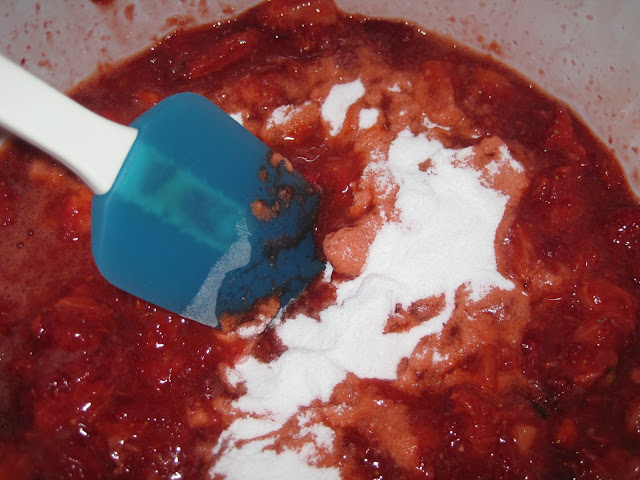
Allow this to boil vigorously for the amount of time in the instructions. In this case, we boiled for about 5 minutes, and this allowed the pectin to gel. You might want to use this time to get your ladle, funnel, clean jars, bands and lids ready near the pot.

You need to work quickly at this point. Fill each jar with the jam to within 1/4-1/2″ of the top of the jar. DO NOT FILL TO THE VERY TOP! You need the space to account for possible expansion of the jam while you’re boiling the jars, as explained in this link.

Make sure the top edge is clean, then place a lid on top.
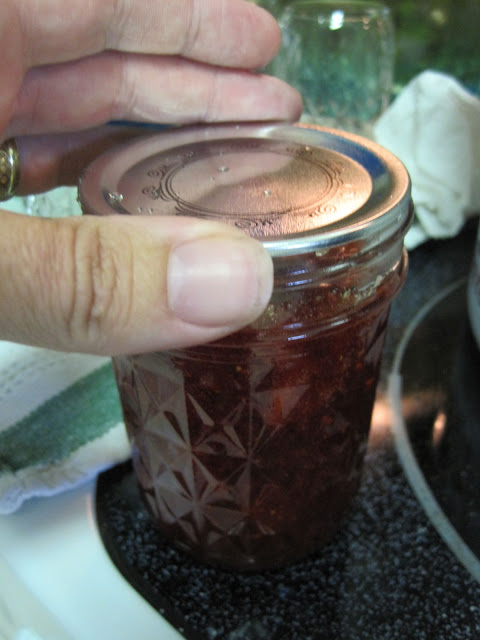
Follow it with a band, which doesn’t need to be closed super-tightly. Just tight enough that the lid won’t slide off. That tightness will loosen up while you’re processing the jars.
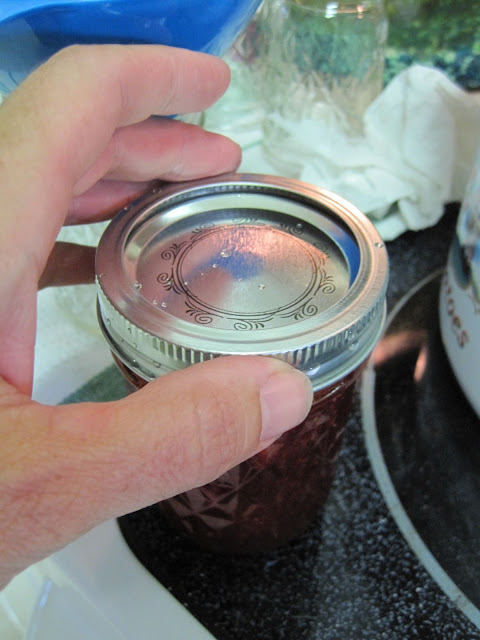
Now it’s time to get the jars into the canner, whose water should be boiling already. I use a rack that makes it easy to lower/raise up to 7 jars.
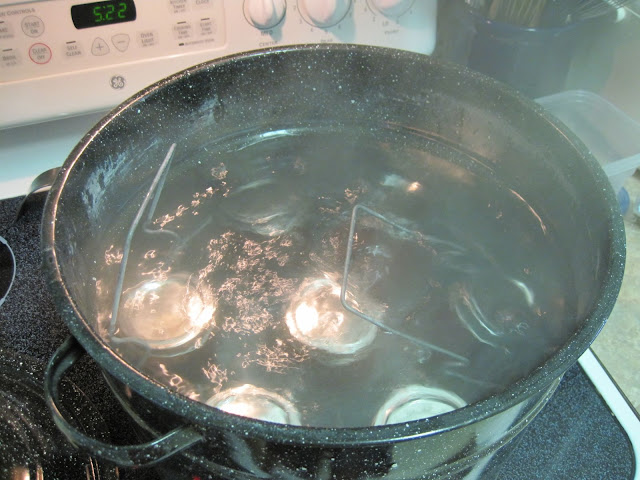
After the requisite number of minutes of boiling (15 minutes in the case of the strawberry jam), pull out the jars and let them dry off/cool on a towel. Listen for the pop — that’s the sound of the lid “imploding”. You want to hear this pop once for each of the jars you have, it’s the proof that a vacuum seal was indeed formed and your jams are good to go for up to 12 months in the cupboard!
If you don’t hear the pop, and there’s still a flexing of the lid when you press down on it, then your jam isn’t sealed. In most cases, you can simply re-boil the jar again and try for that seal. If that doesn’t work, then pop it in the fridge where it’ll last you 7-10 days.
The finished product. Some might suggest you cool the jars upside-down, to help the berries distribute better throughout the jar. I didn’t do that here, so the berries sorta drifted up towards the top.

Recipes claim that you should let the jars sit for 24 hours before using, but I don’t see why. Warm jam on some toast (in this case, potato bread toast)! YUM!


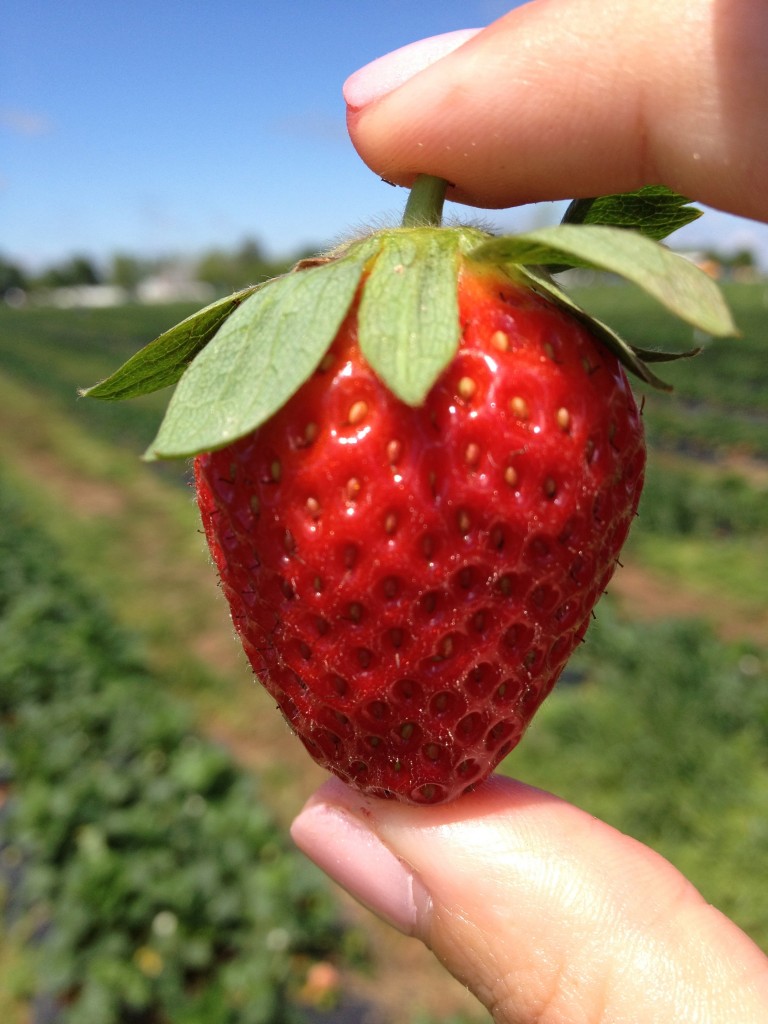
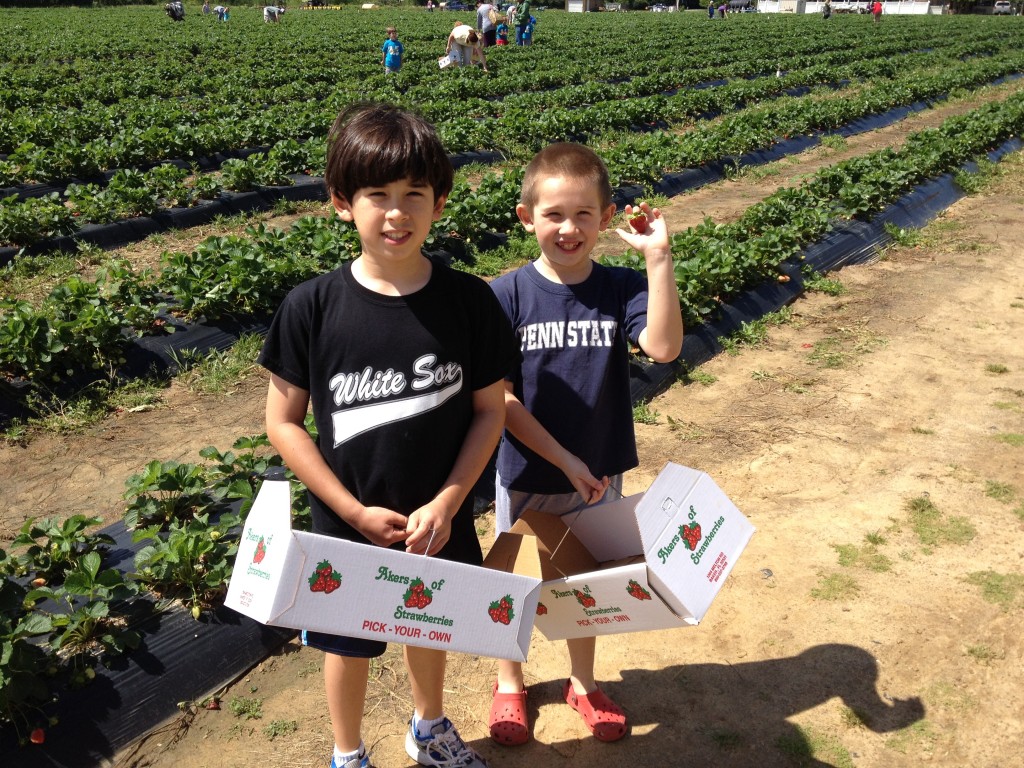
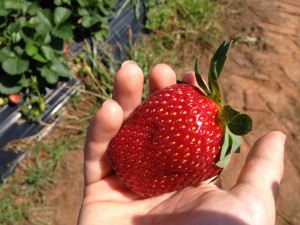

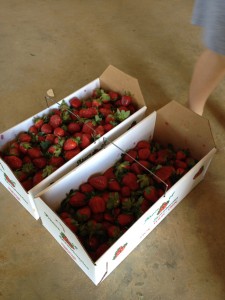
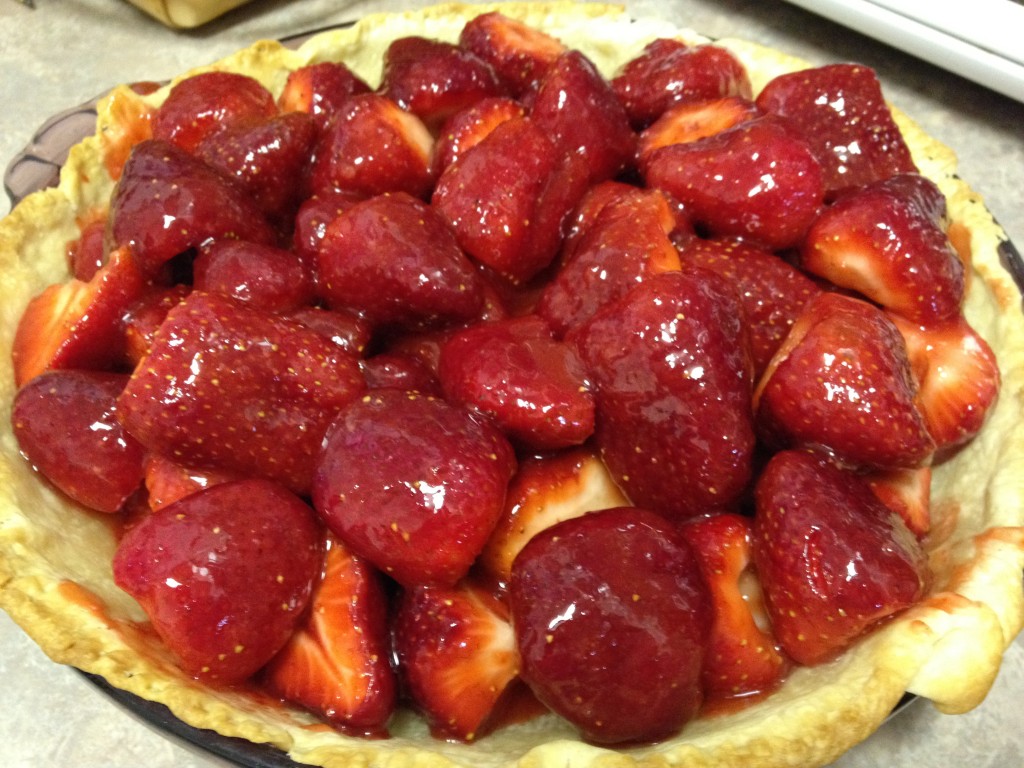
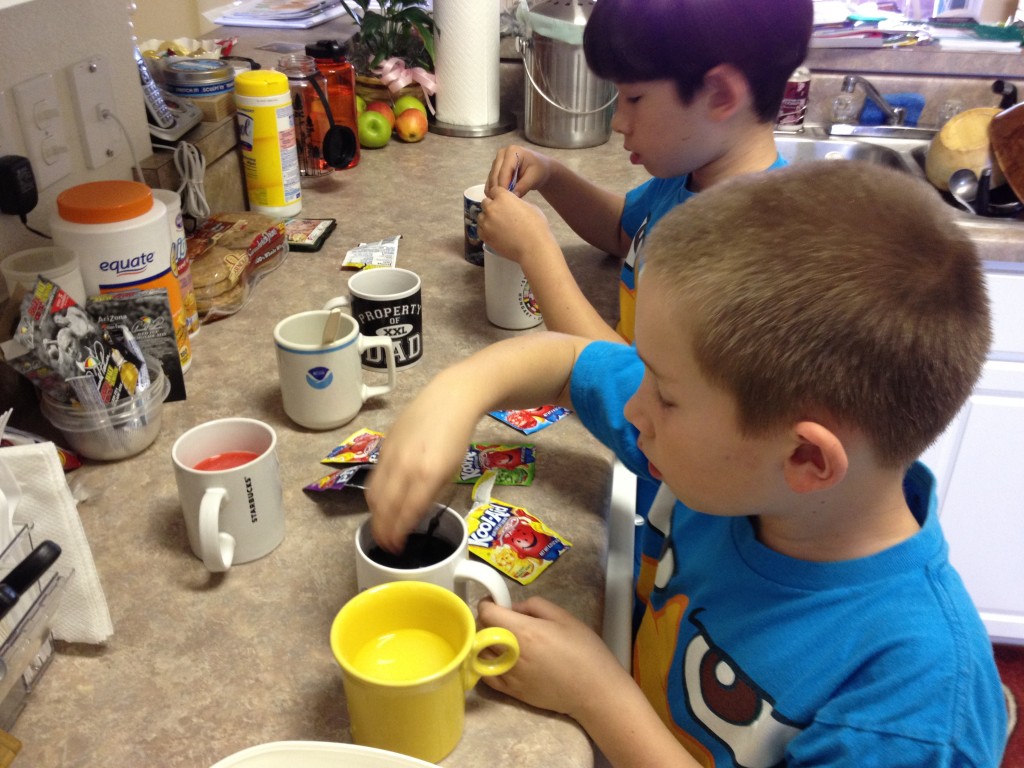




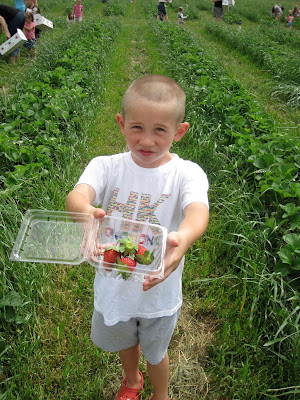
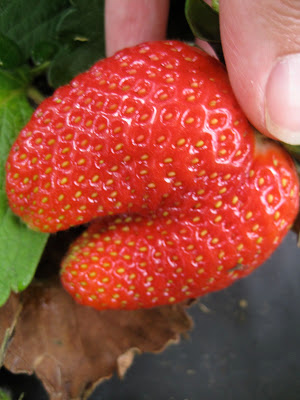
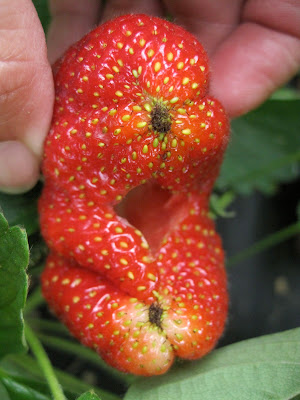
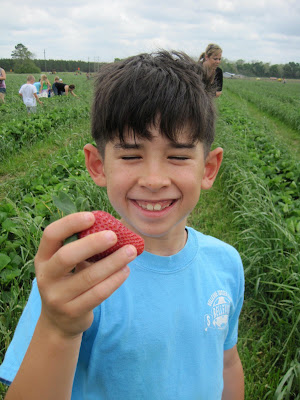
Recent Comments